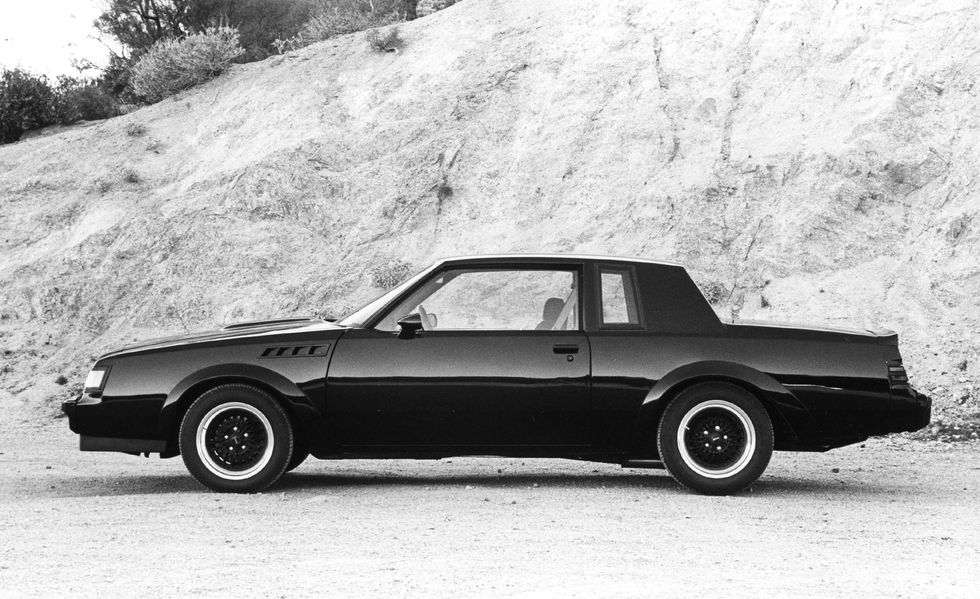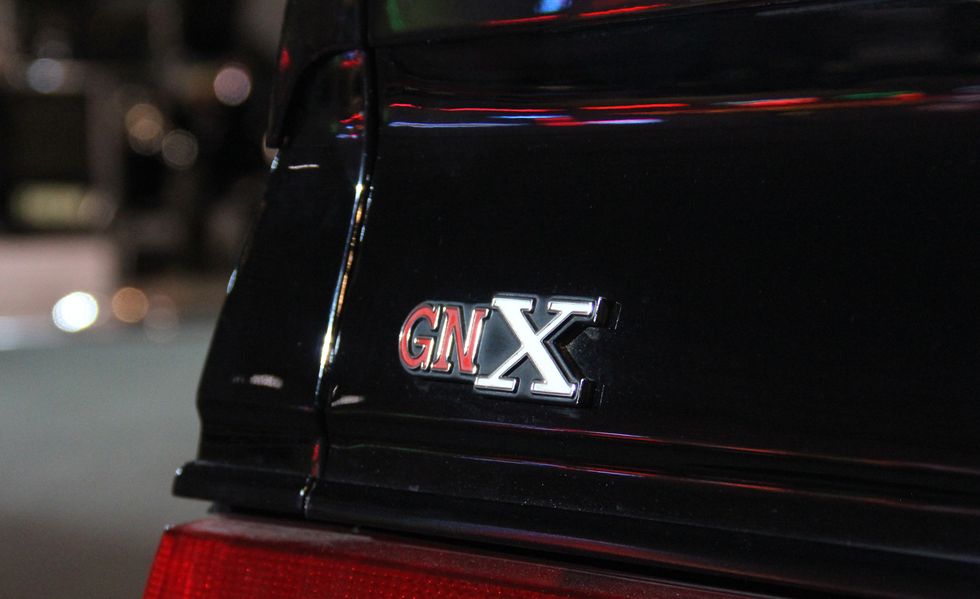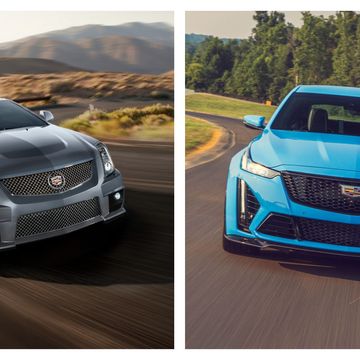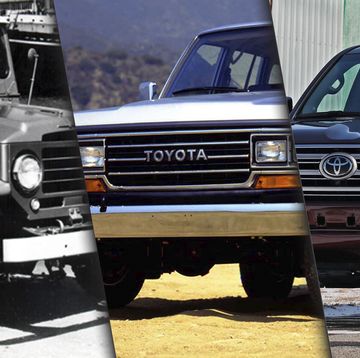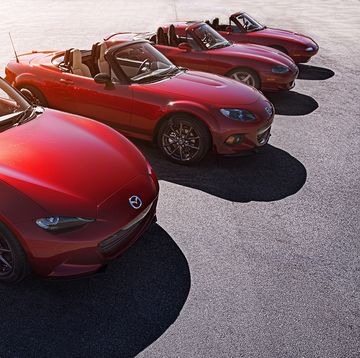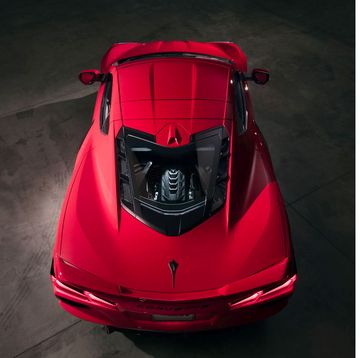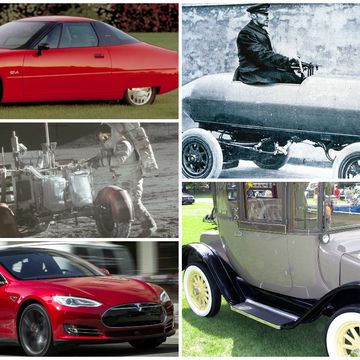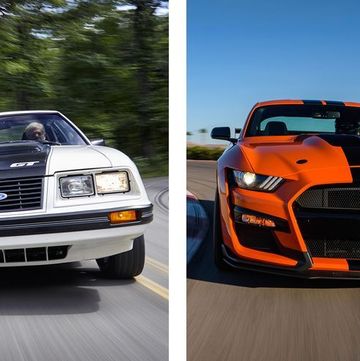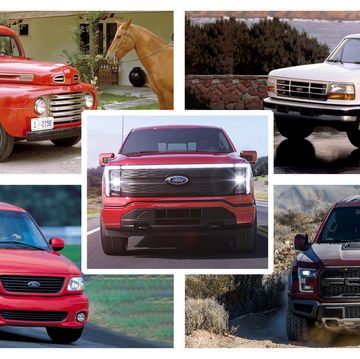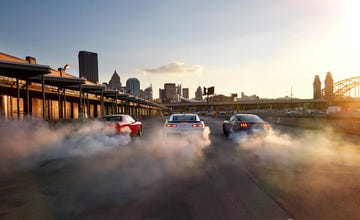For 21 years before NASCAR started selling naming rights in 1971, its top stock-car racing championship was known as the Grand National, and the name lingered in public usage long after the series officially became the Winston Cup. Ten years later, Darrell Waltrip raced factory-backed Buick Regals to claim back-to-back championships in 1981 and '82. So, it was in keeping with division general manager Lloyd Reuss's thrust to move Buick's image from a maker of cushy "doctors' cars" to something more youthful and exciting when it unveiled the first Regal Grand National at NASCAR's 1982 Daytona 500.
Just 215 first-year GNs were built, but then Reuss's team launched a run of all-black Regal GN coupes that would culminate with the truly awesome '87 GNX. "Tom Wallace was the vehicle chief," recalls then–Buick assistant chief engineer Don Runkle, "and I had the engine side. My message to the group: 'We have to beat the Corvette.' "
Turbo Genesis
The turbo V-6 story goes all the way back to 1973 when Ken Baker, a young engineer in Buick's test lab (he would later lead General Motors' electric-vehicle program, then its research labs), started a Boy Scout Explorer program at the Buick engineering department. "I decided that a great project would be to turbocharge the recently revived V-6 with the capability of performance in lighter cars or fuel economy in larger cars," he relates. "We begged, borrowed, and scrounged parts to build a dyno engine, then got a scrap Skylark and married the two. That project involved many engineers giving seminars to the [Scout] kids regarding their areas of expertise . . . and a car that was a blast to drive."
Future Buick boss Reuss returned from a stint at Chevrolet in 1975 as chief engineer and soon called Baker into his office. "He asked about the secret Explorer project." Baker recalls. "I thought it was the end of my career. 'I've heard about that project,' he said. 'Is it any good?' I described our performance and economy goals and two weeks later was asked to head a team—with engineers Tom Wallace and Jeff Lane—to put it into production.
"Then Reuss said, 'How about doing a turbo V-6 Indy Pace Car?' So, we went to work on production and pace-car versions. On the final commitment day for the Indy engine, assistant chief powertrain engineer Cliff Studaker came to the dyno for a power run, and we blew the top off the air cleaner with a major backfire! When we went to Lloyd's office and gave him the update, he said, 'Can we do it or not?' I said, 'Yes!' And the rest is history, perhaps one of the most exciting technology reaches ever in a pace car. We had that V-6 boosted to 21 psi—more than the methanol-fueled cars in the race we were pacing—running on gas with a little octane additive, and it was a hit! Dan Gurney took it for a drive on the track, and after four flat-out laps, we had to replace the tires! It was in the lobby of the Indy museum for quite a while."
Among the key new technologies on that 1976 Indianapolis 500 pace car's engine were a knock sensor and pre-ignition control, "an early version of electronic spark control that helped it run at its limit without damage," Baker explains. Rated at 165 horsepower, the turbocharged 3.8-liter V-6 first made it to production in 1978. The much hotter 200-hp Grand National would follow six years later.
The Black Arts
Other colors were considered, but the decision to make all GNs black gave them a sinister Darth Vader look. Don Hackworth, who replaced Reuss as Buick general manager in 1984, authorized a cool but controversial commercial showing a Grand National rumbling menacingly through a city at night to a Buick-ized version of the George Thorogood and the Destroyers song, "Bad to the Bone." Buick built just 2000 copies of its '84 Regal Grand National and 2102 for 1985—far short of demand.
"The next significant improvement was in 1986, when Ron Yuille and the Turbo Engine Group engineered an intercooler for the 3.8 Turbo SFI V-6," wrote Martyn L. Schorr in his book, Buick GNX. With a new two-piece aluminum intake manifold that increased airflow by 10 percent, the engine was rated at 235 horsepower and 330 lb-ft of torque for '86, then 245 horsepower and 355 lb-ft for '87.
Car and Driver's April 1986 review began: "Corvette, get outa town. Mustang, move over. Camaro, keep your back to the wall at all times. The biggest, baddest gun west of the Pecos is loose in the streets, and there's gonna be some shootin'…." C/D clocked a 4.9-second zero-to-60-mph run, quicker than a contemporary Corvette, most U.S.-market Ferraris, and even the Lamborghini Countach. Its quarter-mile was also impressive at 13.9 seconds. But C/D's tech team calculated that the test car's engine was actually pumping out something like 290 horses versus the advertised 235, so it may have been tweaked by Buick engineers.
Ed Mertz became Buick general manager in 1986, and GM's aging rear-wheel-drive mid-sizers ceased production in 1987 to be replaced by new GM10 front-drive models for 1988. But Buick extended its Grand National build through the end of that year to satisfy demand. A total of 20,740 GNs were built for 1987 (versus 5512 in 1986). Of those, exactly 547 would be converted to GNXs.
A Big Last Hurrah
The GNX happened because then–chief engineer Dave Sharpe, advanced concepts manager Mike Doble, and project engineer Chuck Jensen badly wanted it. "Tim Logsdon, my boss at the time, pulled me into Dave's office and said, 'We want to build a Grand National to end all Grand Nationals to celebrate the end of its run,' " Doble recalls. "The original number was 200. Then we said, 'Let's make 500 because of the Indy 500 and the Daytona 500.' Then, because of special dealership incentives, Mertz told me to make 547."
Buick teamed with ASC/McLaren to build the ultra-hot GNXs to avoid disrupting normal engineering and production and worked hard to make the cars not just faster but substantially better than the '87 GN on which they were based. The objective was to build the quickest ever GM production sedan—or, as was written in an internal presentation, "to create a limited-production Buick Grand National that achieves a memorable place in the history of high-performance automobiles, one that car collectors will want to own and that automotive writers will never forget." Through improved engine controls, freer-flowing heads, low-restriction exhaust, and upgrades to the (Garrett AiResearch) turbocharger—including a lightweight, faster-responding ceramic turbine wheel—output was boosted to a muscular 276 horses and 360 lb-ft of torque.
The body was stiffened, the rear suspension redesigned (with a longitudinal torque bar and a lateral Panhard rod, plus stiffer springs, shocks, and stabilizer bars), and the wheels and tires upsized to 245/50VR-16 front and 255/50VR-16 rear on special aluminum wheels (the '87 Grand National had 15-inch wheels) to better handle that torque and improve stability. Also added were a transmission oil cooler, composite fender flares, and Stewart-Warner analog gauges (including tachometer, oil pressure, coolant temperature, and turbo boost) in a modified cluster. Functional front-fender louvers helped lower underhood temperatures; the all-black exterior was set off by bold GNX badges on the grille, decklid, and wheel centers; and each GNX got its own serial-number plaque on the passenger-side dashboard.
The original 500 GNXs were allocated to Buick's 500 top-selling dealers (out of roughly 2700 at the time), "but well more than 500 wanted one," said then–assistant general sales manager Darwin Clark. "And we had the Select Sixty program, where Buick dealers competed to be among our top 60. But only 47 dealers qualified for Select 60 in 1986, and Mertz promised each of them an extra GNX. Sharpe and I said, 'How are we going to come up with 47 more?' But ASC/McLaren was able to do it."
Getting media into the GNX was a challenge. With all 547 allocated to dealers, none were available for Buick's press fleets. So, in January 1987—before the program had final approval and well before the prototypes were fully developed—Larry Gustin (newly promoted to news-relations manager) invited key magazines one at a time to GM's Desert Proving Ground in Arizona to spend a day with two prototypes—one for driving, the other for photography. Car and Driver (May 1987) recorded a 4.7-second zero-to-60-mph run and a 13.5-second quarter-mile at 102 mph. Mertz later agreed to surreptitiously send one production GNX to Schorr, who was then Buick's East Coast PR rep, for Popular Mechanics and a few others to test.
When the program finally was approved and development completed, some of the dealers who got GNXs chose to keep them, while others charged premiums of as much as $20,000 over their $29,290 sticker (which was already $10,995 over the $18,295 list for a fully optioned '87 Grand National). One reportedly sold for $75,000. But this baddest Buick Grand National was not just a hoot to drive but also hugely historically significant. The last old-school American muscle car, it was uniquely powered by a high-tech harbinger of the displacement-downsized, turbo-boosted, federal-regulations-driven, high-fuel-economy future.



